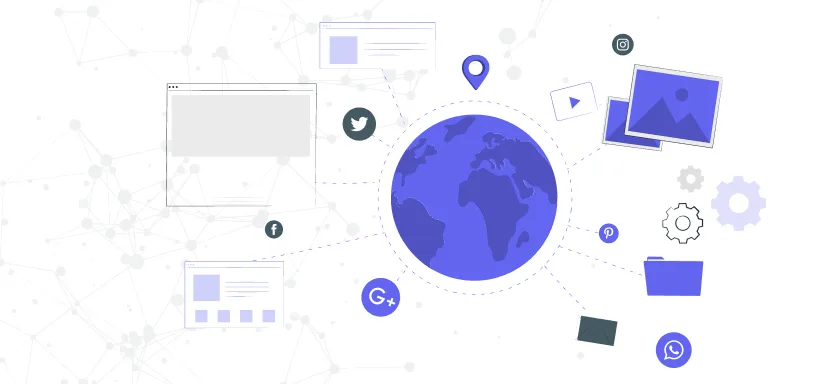- Customer Experience
Mastering the Omnichannel Customer Experience


The omnichannel customer experience refers to a sales approach that provides customers with an integrated shopping experience. Whether the customer is shopping online from a desktop or mobile device, from a physical store, or through a catalog, the experience is seamless and cohesive.
In essence, the omnichannel customer experience merges the capabilities of physical and digital channels to make it more convenient for customers.
The omnichannel customer experience is no longer a luxury but a necessity for businesses.
Consumers now expect a unified shopping experience across all platforms.
They want the ability to interact with a company whenever and wherever they choose, using the method that's most convenient for them.
Moreover, a superior omnichannel experience can lead to increased customer loyalty and higher revenue. Customers who can shop across multiple channels tend to spend more than those who shop via a single channel.
Hence, mastering the omnichannel customer experience is crucial for businesses aiming for growth and profitability in the current competitive landscape.
Understanding Omnichannel Customer Experience
The omnichannel customer experience is about creating a unified and consistent interaction between customers and businesses across all channels. It ensures that irrespective of the channel a customer chooses to interact with a business - be it through a website, mobile app, physical store, social media, or customer service - the experience is seamless, personalized, and high-quality.
In an omnichannel approach, all channels are interconnected, providing customers with the ability to switch between channels during their buying journey while maintaining the same level of understanding and service from the business.
Differentiating Omnichannel from Multichannel Approach
While both omnichannel and multichannel approaches involve selling across multiple physical and digital channels, there's a crucial difference between them.
A multichannel approach simply means offering multiple, separate channels for customers to interact and transact with a business. These channels may not necessarily be integrated, leading to disjointed experiences for the customer.
On the other hand, an omnichannel approach interlinks every channel to create a cohesive customer experience. Irrespective of the channel customers begin their shopping journey, they can switch to another without any disruption to their experience.
The Role of Technology in Omnichannel Customer Experience
Technology plays a pivotal role in implementing a successful omnichannel customer experience. It provides the necessary tools to integrate various channels, track customer behavior across these channels, and deliver personalized experiences.
Technologies like customer relationship management systems and customer data platforms help in collecting and analyzing customer data from all touchpoints. E-commerce platforms, mobile apps, and social media integration allow businesses to reach customers wherever they are. Meanwhile, AI and machine learning can offer personalized product recommendations based on a customer's past behavior, enhancing their shopping experience.
In essence, technology is the backbone of an omnichannel strategy, helping businesses to understand, reach, and serve their customers better.
Advantages of Omnichannel Customer Experience
Implementing a successful omnichannel strategy can provide several benefits to businesses, from increased customer retention to consistent brand imaging.
Increased Customer Retention
An omnichannel customer experience can significantly enhance customer retention rates. When customers enjoy a seamless and consistent experience across all channels, they are more likely to remain loyal to the brand. They can interact with the brand at their convenience, whether in-store or online, enhancing their overall satisfaction and increasing their chances of repeat purchases.
Enhanced Customer Satisfaction
Omnichannel strategies focus on delivering a consistent, personalized customer experience. This means customers can pick up where they left off on one channel and continue the experience on another. This level of consistency and personalization improves the overall customer experience, leading to higher customer satisfaction rates.
Boost in Sales and Revenue
Omnichannel customers often have higher engagement levels, and they typically shop more than single-channel customers. By providing a seamless shopping experience across all channels, businesses can encourage more purchases, thereby boosting sales and revenue.
Consistent Brand Image Across Channels
An effective omnichannel strategy ensures that your brand image and messaging is consistent across all channels, be it your physical store, website, mobile app, or social media platforms. This consistency strengthens your brand image, makes your business more recognizable, and enhances trust among customers.
Challenges in Implementing Omnichannel Customer Experience
While the benefits of an omnichannel approach are significant, implementing it is not without its challenges. Here are some of the key hurdles businesses may face in their pursuit of creating a seamless omnichannel customer experience.
Integration of Various Channels
One of the biggest challenges in implementing an omnichannel strategy is the integration of various channels.
It requires a robust technology infrastructure that can seamlessly connect all customer touchpoints, from physical stores to digital platforms like websites and social media. Not only does this involve significant investment in the right technologies and systems, but it also requires substantial planning and coordination across different departments within the organization.
Maintaining Consistency Across Platforms
Ensuring a consistent customer experience across multiple channels can be a complex task. Each channel has its unique characteristics and customer expectations.
Businesses need to ensure that their brand messaging, pricing, product information, and customer service standards remain uniform across all these channels. This requires effective communication and cooperation among different teams, from marketing and sales to customer service and IT.
Personalization and Data Security Concerns
With the rise of digital channels, customers now expect personalized experiences based on their preferences and past interactions with the brand.
However, delivering such experiences requires collecting and analyzing large amounts of customer data. This raises concerns about data security and privacy.
Businesses must strike a balance between personalizing the customer experience and ensuring the security of sensitive customer data. They need to comply with various data protection regulations and ensure that they have robust security measures in place to prevent data breaches.
Best Practices for Implementing an Omnichannel Strategy
Creating a successful omnichannel strategy involves careful planning and execution. Here are some best practices to consider:
It's crucial to understand the customer journey across all channels.
This involves mapping out every touchpoint a customer has with your brand, from initial contact to purchase and post-purchase interactions. Understanding this journey can help you identify where improvements are needed to ensure a seamless experience.
Each interaction a customer has with your brand should be consistent and personalized.
This means maintaining the same tone of voice, design aesthetics, and level of service across all channels. Personalization should also be a priority, using customer data to tailor experiences to individual preferences and behaviors.
Technology is the backbone of a successful omnichannel strategy.
It's important to invest in the right tools that can integrate various channels, collect and analyze customer data, and deliver personalized experiences. This might involve using a CRM system, analytics software, and marketing automation tools.
As you collect and use customer data, it's essential to prioritize data privacy and security. This involves complying with data protection regulations, using secure systems, and being transparent with customers about how their data is used.
Effective Tactics for Creating an Omnichannel Plan
Implementing an omnichannel strategy requires careful planning. Here are some tactics to guide your efforts:
Identifying Key Customer Touchpoints
Start by identifying all the touchpoints a customer has with your brand across all channels. This will give you a clear picture of the customer journey and help you identify areas for improvement.
Coordinating Marketing Efforts Across Channels
Your marketing efforts should be coordinated across all channels. This means aligning your messaging, promotions, and campaigns to ensure a consistent brand image and customer experience.
Using Analytics to Understand Customer Behavior
Use analytics to understand customer behavior across all channels. This can give you insights into what customers want, their pain points, and what drives their buying decisions, helping you to tailor your strategy accordingly.
Continually Testing and Improving the Strategy
An omnichannel strategy should not be static. It's important to continually test and improve your approach based on customer feedback and data insights.
The Bottom Line
In conclusion, an omnichannel customer experience is becoming increasingly important in today's digital age.
By providing a seamless and consistent experience across all channels, businesses can enhance customer satisfaction, increase loyalty, and drive growth.
While implementing an omnichannel strategy can be challenging, with careful planning, the right technology, and a focus on understanding and meeting customer needs, businesses can successfully navigate these challenges and reap the benefits of this approach.
Now, more than ever, it's crucial for businesses to embrace an omnichannel mindset and prioritize the customer experience in all interactions.
